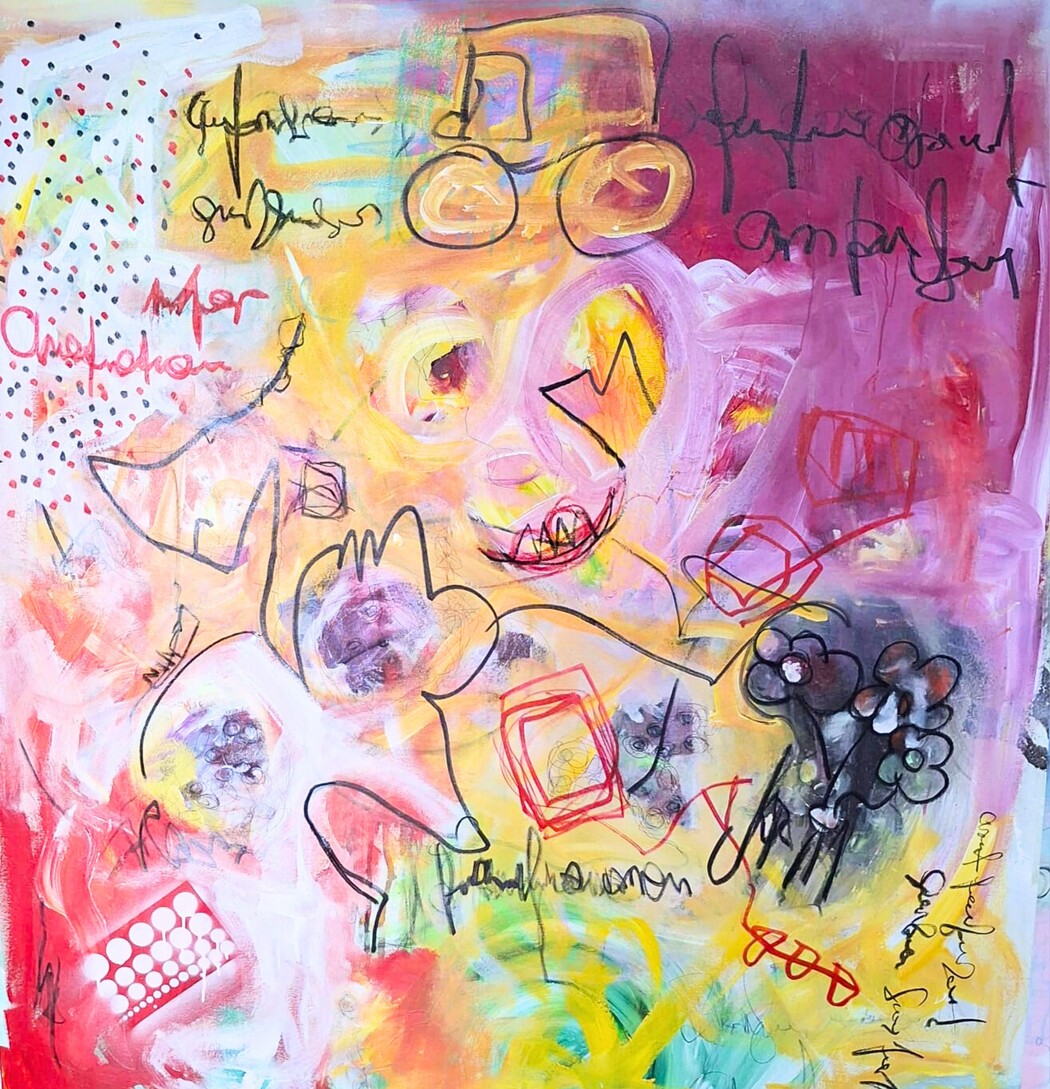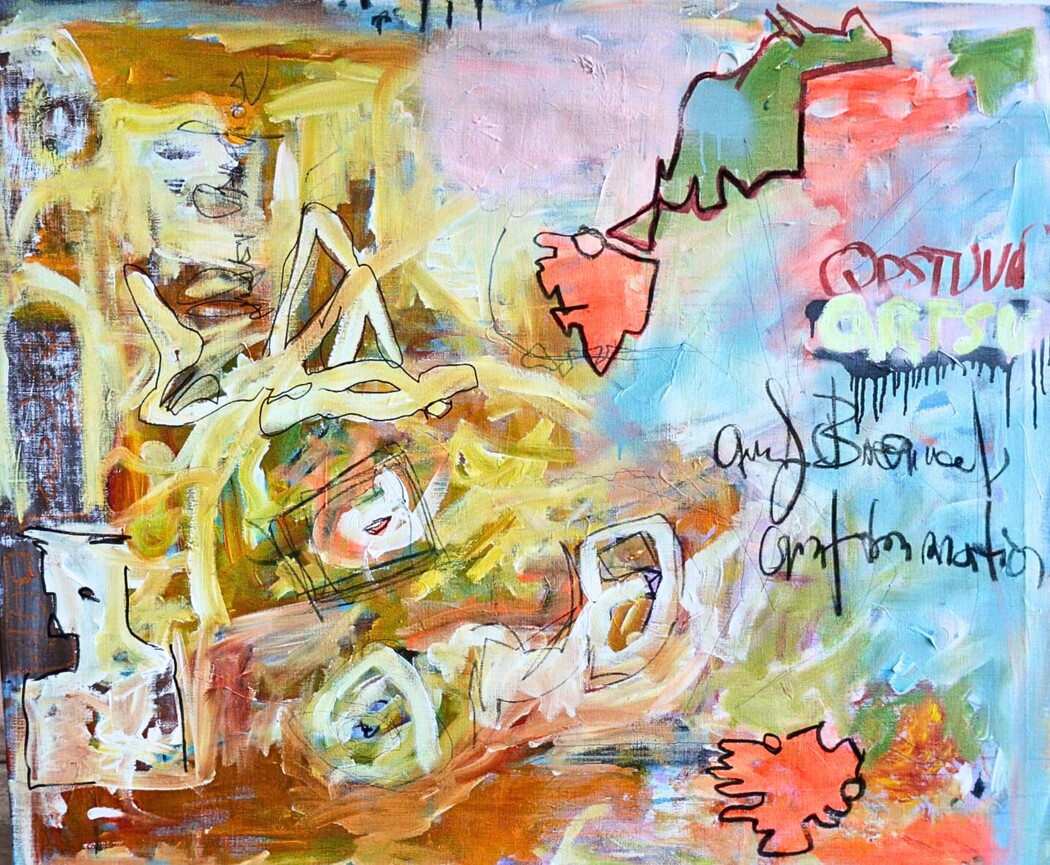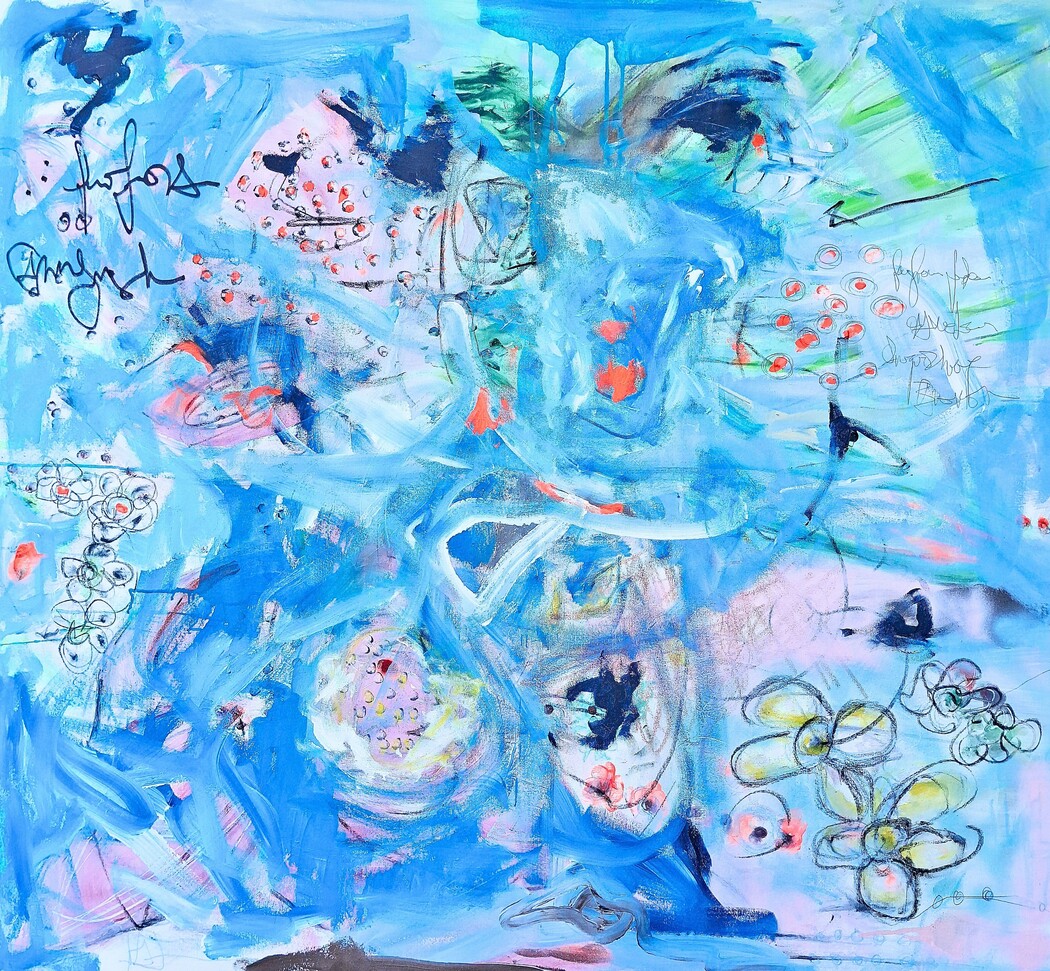Claudine Hauke
To begin, I’d love to ask about the heart of your recent series. Your statement ‘Life is a Playground – Play It!’ feels both liberating and profound. What sparked this idea, and how does it shape the way you approach your work and life today?
We are all players in the game of life. It’s a big, unpredictable game—you win, you lose, you make choices that shape the next step, and ultimately determine your path. What matters is being an active player: making smart decisions, jumping hurdles, investing wisely—whether in people, time, or creative energy. No risk, no gain—but I believe in calculated risks.
I often ask myself: What kind of player do I want to be? I’ve learned from mistakes, and like in any good game, I try to move forward to the next level each time. That mindset guides both my life and my work.
Losing loved ones, including my late husband, has shown me how fragile and fleeting life can be. There’s no time to hesitate, no space for excuses. I’ve chosen to go for it—fully. That sense of urgency has made my life more fulfilling and has made my work bolder, more expressive, and emotionally resonant.
Your works are rich with layered media—what does your typical painting session look like, and how do you know when a piece is “done”?
To be honest, most of my painting sessions are quite chaotic. I’ve never had a fixed studio space—my life has involved a lot of moving, so I’ve painted in all sorts of places: leaning against a tree, in basements, garages—wherever I could set up. That means each time I work, I need to set up all my materials from scratch and clean up afterwards.
I usually listen to music while I paint. I work on relatively large canvases, and the process tends to get messy—there’s a lot of movement, speed, and intuition involved. Especially with this recent series, there was a real sense of bustling energy. When I paint, it can feel almost like a trance; sometimes I’m not even sure how I arrived at the final result.
Each piece in this colorful series went through at least three or four layers or sessions. At a certain point, I simply step back and look. I just know—it’s something about composition, about balance. And when I feel that I’ve poured all my energy and emotion into the canvas, when I feel emptied in the best possible way—that’s when it’s done
 Claudine Hauke | Confetti Morning | 2025
Claudine Hauke | Confetti Morning | 2025
You’ve lived and worked on four continents. How have these varied cultural and environmental experiences shaped your artistic voice?
Living in different cultures and environments has truly opened my eyes to many of the issues we face today—social, environmental, and political. Being immersed in such diverse contexts made me more aware of how people respond to challenges and how they come together to improve life and support their communities.
These experiences deeply shaped how I approach my art. It became a tool not just for personal expression but also for raising awareness and sparking dialogue. I’ve learned to use my work to voice concerns and invite reflection—hopefully in a way that’s constructive and inspiring.
You were formally trained in photography but are a self-taught painter. How does your photographic eye influence your work on canvas?
I trained as a photographer in the late ’80s, back when everything was still analog—no digital shortcuts. That experience taught me to develop a strong sense of proportion, balance, and color composition. You had to be precise and really understand how to frame a moment or scene, because there was no instant preview or editing.
Those skills have stayed with me and continue to influence how I approach painting. Even though my style is abstract and expressive, my photographic eye helps me bring structure and intention to each composition. I think it gives my work a visual coherence—even amid the chaos—that traces back to my roots in photography.
 Claudine Hauke | Kaleidoscope Rumble | 2025
Claudine Hauke | Kaleidoscope Rumble | 2025
You’re currently building the Lakritz Gallery & Art Garden in South Africa. What is your vision for this space?
I live in a small coastal village in the Eastern Cape, South Africa—the country’s poorest province. Unlike Cape Town or Johannesburg, where the art market is well-established, the rest of the country—especially rural areas like ours—has very limited access to contemporary art. Art education and appreciation are often minimal, and there’s a widespread lack of understanding about what contemporary art even is, from art students to the general public.
With the Lakritz Gallery & Art Garden, my vision is to change that—slowly but meaningfully. I’ve developed a vibrant event program that includes three group exhibitions featuring artists from three African countries. We host art talks for adults on a range of creative and thought-provoking topics, readings for children, and art dinners that turn art into a shared social experience.
We also produce the Lakritz Magazine, which explores cultural, social, and artistic themes from the region, helping to connect our local realities with broader conversations. The goal is to build a space for social interaction, education, and dialogue—a platform that sparks curiosity and exchange. And ultimately, I hope it will also help bring more visitors to our area, which would be a welcome boost for the local community and economy.
 Claudine Hauke | Swing first, think later | 2025
Claudine Hauke | Swing first, think later | 2025
Looking ahead, how do you hope your work will resonate with future audiences—and what do you want them to feel when they stand in front of your art?
I hope my work can help sensitize people to certain topics—whether social, environmental, or emotional—and spark meaningful conversations or reflections. Ideally, it offers a space where someone might feel seen or understood, where they can connect with the emotions or concerns I’ve put into the piece.
By being open and honest in my work—by laying my emotions bare on the canvas—I want to create a sense of support and shared experience. If someone stands in front of my art and feels less alone in their thoughts or fears, then I’ve succeeded. It’s about creating a connection, a dialogue—even across time.


Leave a Reply